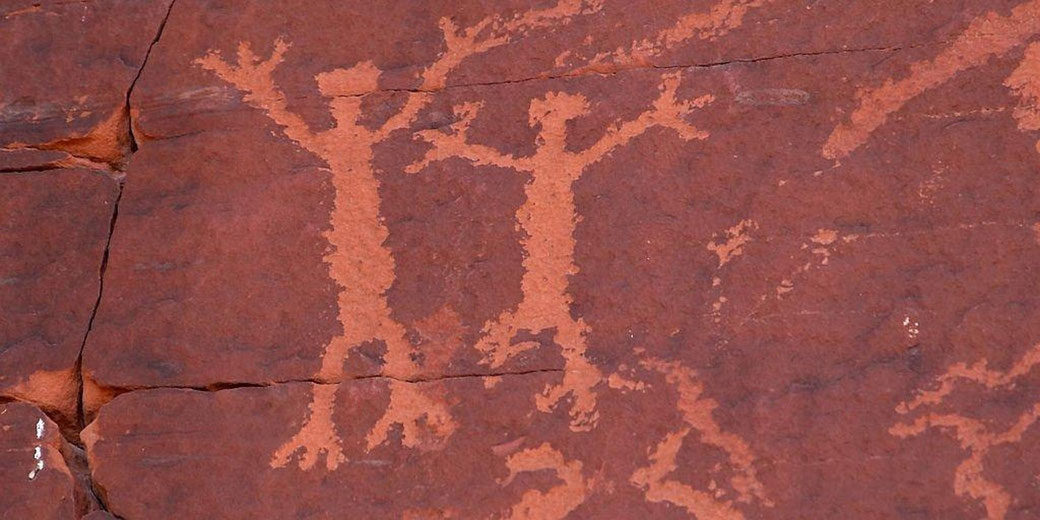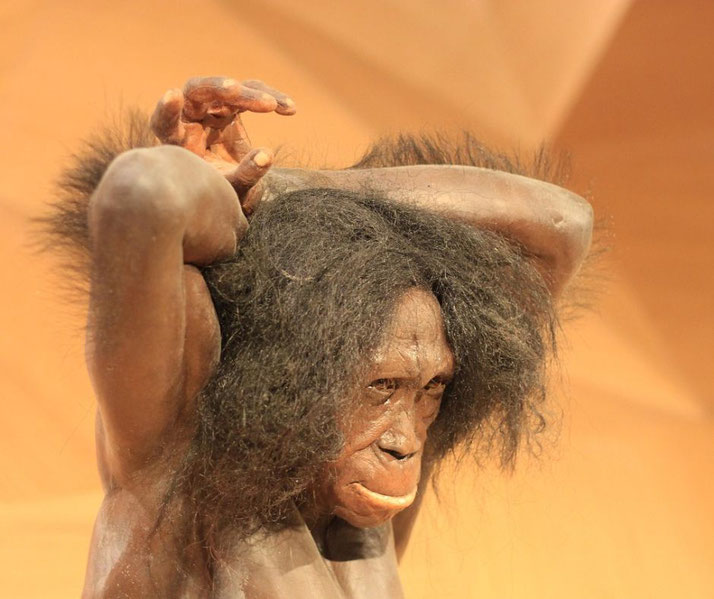What is the 'Out of Africa' theory?

Today, humans live in almost every part of the world. Compared to other animals, humans are unique because we can adapt to an incredible array of differnt environments, from the hottest to the coldest climates.
In comparison, other animals have to adapt to specific climates and usually stay in one area.
It wasn't always this way. In fact, there was a time when humans did not exist. Instead, the earth was filled with many animals and plants without humans.
Then at one point, the first humans appeared. Slowly over time these humans migrated from their starting point and reached every corner of the globe.
Uncovering the lost story of human migration
The story of human migration is difficult to rediscover, because it happened an hundreds of thousands of years ago.
Since humans had not learned to write until just 5000 years ago, modern scientists have had to rely on archaeological remains to figure out how and when humans moved around the earth.
Since there is limited evidence from so long ago, the story of early human migrations is constantly being updated as new discoveries appear.
As a result, different theories have been proposed to explain how humans spread.
One of the most important ideas in this area is known as the 'Out of Africa' theory.
Here, we will explore the evidence for this theory and discuss some of its effects on how we understand human history.

Who were the early humans?
According to evolution, humans evolved like other animal species on earth.
Just as different types of dogs developed over thousands of years but are still part of the 'dog family', which is known in Latin as canis, several kinds of humans lived at different times but are all part of the 'human family', which is known in Latin as homo.
Modern humans are the last surviving member of the human family. Specifically, we are known by the scientific name homo sapiens.
However, before we appeared, early versions of humans such as homo habilis, homo neanderthalensis, and others were the first to develop.
These first humans evolved from other primates which include monkeys and apes between 4 and 2 million years ago, somewhere in eastern and southern Africa.
At that point in history, Africa had many forests, so primates thrived among the trees and had plentiful food.
The earliest known member of our genus was homo habilis. They were a relatively primitive species, but it was the first human to have some important new traits.
First of all, they developed the ability to walk on two legs rather than on all fours.
Also, homo habilis was the first species in our genus to use stone tools. This allowed them to make the most of their environment by using the objects they saw around them as tools.
Their improved ability to move and maximise their environment saw a growth in their population.
Next, around 1 million years ago, another early human known as homo erectus appeared and began to move north out of Africa and into the Middle East.
Evidence shows that they had the same skills as homo habilis. But, they also learnt how to start fires when needed.
What is the 'Out of Africa' theory?
The Out of Africa theory is the most widely accepted explanation for where modern humans come from.
It says that all humans came from Africa and then moved out of the continent over time.
From what we've covered in the story of human evolution so far, it seems to fit well.
In fact, a wide range of evidence supports this model, including genetic studies, fossil records, and archaeological finds.
Firstly, genetic studies have shown that all modern humans share a common African ancestor dating to about 200,000 years ago.
Secondly, fossil records show that early human fossils are only found in Africa until about 100,000 years ago.
After this point, we see the first evidence for human populations outside Africa.
Why did humans leave Africa?
Scientists think humans left Africa for several reasons. One is that as the African climate started to become drier, and humans had to move to find more favourable conditions.
Scientists have come to this conclusion, because there is evidence of environmental change in Africa around 100,000 years ago.
Specificially, there seemed to be less rainfall at the time. If so, that explains why early humans had to look for new places to live when forests and trees disappeared.
Another reason is that humans may have simply begun exploring their surroundings more, and eventually left Africa over time or to intentionally find new lands to settle.
Supporters of this idea point to universal human attraction to curiosity and the drive to discover new areas.
Perhaps early humans also had a growing population, which meant that they had to find new space for everyone.
Regardless of whether it was one or all of these reasons, modern Homo sapiens began to migrate out of Africa.

Where did early humans go?
The first humans to leave Africa migrated north into the Middle East and, from there, they continued into Europe and Asia.
The first modern humans reached Australia around 50,000 years ago, likely by island-hopping across the Indonesian archipelago.
About 40,000 years ago, they also reached Europe, where they clashed with the last Neanderthal humans.
Since Neanderthals vanished from the record soon after, experts think modern humans either wiped them out or simply outcompeted them for resources.
The Americas were the last habitable continents to be settled by early humans, with people reaching South America around 15,000 years ago.
Experts think humans crossed a frozen 'land bridge' linking eastern Asia to North America during the last major ice age.

What are other theories?
Other ideas have been proposed besides the Out of Africa theory. One alternative theory is the 'multiregional hypothesis'.
This theory describes how global human populations evolved independently from a common ancestor at different places around the world, rather than just in Africa initially.
Some fossil evidence seems to support this idea, but most scientists prefer the Out of Africa theory.
What are the implications of the Out of Africa theory?
The Out of Africa theory affects our view of human history in several ways. First, since it suggests that all humans are descended from an ancestor from Africa who lived around 200,000 years ago, it means that we share a common heritage.
Second, the theory explains why there is such a small genetic difference between all modern humans, no matter where we are in the world.
Further reading
What do you need help with?
Download ready-to-use digital learning resources
Copyright © History Skills 2014-2025.
Contact via email
With the exception of links to external sites, some historical sources and extracts from specific publications, all content on this website is copyrighted by History Skills. This content may not be copied, republished or redistributed without written permission from the website creator. Please use the Contact page to obtain relevant permission.





